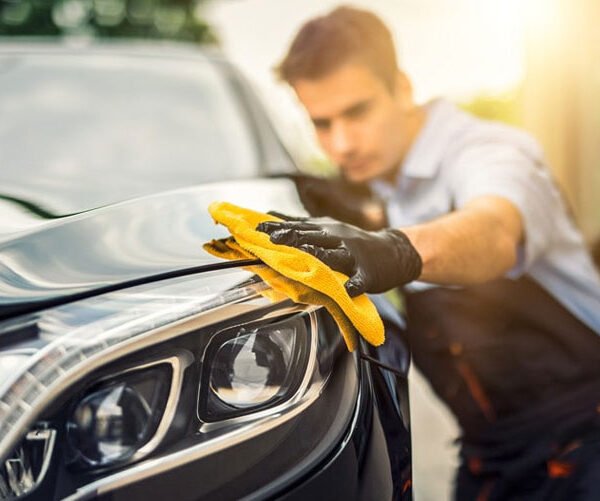The History of the American Muscle Car: From the 1960s to Today
The mighty roar of a powerful V8 engine, the distinctive styling cues that scream performance, the sheer visceral thrill of unmatched acceleration—these are the essential ingredients of the quintessentially American automotive creation known as the muscle car. While high-performance vehicles had existed before, the particular combination of design, power and affordability that defines the muscle car was born in the early 1960s. Through changing economic landscapes, oil crises, environmental regulations, and innovations in automotive technology, the muscle car has survived half a century to remain an enduring symbol of American auto ingenuity.
Definition of a muscle car
A muscle car is usually defined as a intermediate- or full-sized American car with a large, powerful V8 engine, rear-wheel drive, and performance-oriented design cues, intended for straight-line speed and acceleration rather than handling or refinement. More than just a fast car, the muscle car formula prioritizes raw power, aggressive looks, and youthful energy at an affordable price.
Brief overview of the article’s content
This article will trace the origins of the American muscle car in the early 1960s, its “golden era” heyday through the 1970s, struggles in the 1980s and 1990s, and modern resurgence from the 2000s onwards. The outsized cultural influence of these cars will also be explored, as will speculation about the future of the muscle car in an era of alternative powertrains like electric and hybrid technology. From the Pontiac GTO to the Ford Mustang, Chevrolet Camaro, Dodge Challenger, and more, all the icons of American muscle will roar through these pages.
The Birth of the American Muscle Car (1960s)
The American muscle car was born out of Detroit in the early 1960s, the result of a confluence of conditions in the auto industry, engineering capabilities, consumer culture, and regulatory environment that allowed American car manufacturers to produce unusually powerful vehicles aimed directly at the nation’s youth.
Historical context and factors leading to the rise of muscle cars
In the prosperous postwar years of the late 1950s and early 60s, the dominance of America’s Big Three automakers—GM, Ford, and Chrysler—was at its peak. With limited competition from abroad, domestic automakers enjoyed huge sales and were able to dedicate enormous resources to new technologies and market research.
At the same time, advances in metallurgy and manufacturing enabled more powerful V8 engines with overhead valves and higher compression ratios. Legislative efforts to ban street racing inadvertently led automakers to develop fast cars that could be sold for legal uses like drag racing. Rising numbers of younger buyers with disposable incomes signaled the emergence of an important new market.
Key pioneers and early models
Pontiac GTO
In 1964, Pontiac made an end-run around GM’s corporate ban on intermediate-sized cars having engines larger than 330 cubic inches by offering a 389 cubic inch V8 as an option package for its Tempest LeMans model, creating the legendary Pontiac GTO—considered by many to be the first true muscle car.
Combining serious racing technology with styling that resonated with young buyers, the enormously successful GTO showed other automakers the potential goldmine in affordable high-performance cars.
Ford Mustang
The 1964 Ford Mustang is often cited as the most iconic muscle car ever made. Introduced at the 1964 World’s Fair, its sporty, youthful style, lively handling and diverse powertrain options in a smaller, more affordable package created a formula that proved wildly popular.
The Mustang succeeded in being both a radical new direction for Ford as well as tapping directly into the zeitgeist of 1960s America. Over a million were sold within 18 months of launch.
Chevrolet Camaro SS
In 1967, Chevrolet debuted its Camaro SS model to compete directly with Ford’s Mustang. Offered with big block V8 engines and aggressive styling, the Camaro SS had great success bringing younger buyers into Chevy showrooms.
Like the Mustang, the Camaro was flexible as both a sporty coupe and high-powered muscle car, cementing the versatility of the formula.
The Golden Era of Muscle Cars (1970s)
Building on the successes of the 1960s pioneers, the 1970s represented the peak of muscle car power, popularity, and cultural influence—before market realities began bringing the original muscle car era to an end.
Evolution of muscle cars during the 1970s
As the major automakers continued one-upping each other under relaxed regulations, muscle cars became ever larger, lower, louder, and more powerful.
Even as overall sales began to slow in the less prosperous, oil-shocked 1970s, muscle car variants made up some of Detroit’s most important and profitable models. Technical innovation also continued in chassis design, aerodynamics, and use of lightweight materials.
Impact of oil crisis and environmental regulations
The 1973 OPEC oil embargo and rising fuel prices throughout the 70s dealt a harsh blow to the high-powered, gas-guzzling muscle car formula. At the same time, a growing environmental movement led to emissions regulations forcing automakers to dial back compression ratios and horsepower.
The party was ending for Detroit’s focus on unrestrained muscle. But the iconic status and sales success of these cars at the start of the decade provided a high water mark for Detroit. Muscle cars occupied a central position in American automotive culture unlike any prior era.
Iconic muscle car models of the decade
Despite economic and regulatory challenges emerging through the 1970s, a number of iconic high-water mark muscle cars debuted with powerful new engines and boundary-pushing performance specs.
1970 Chevrolet Chevelle SS 454
One of most potent muscle cars ever released. Its 7.4L V8 delivered 450hp and 500 lb-ft torque, rocketing the Chevelle inbrute, neck-snapping fashion.
1970 Buick GSX
While often overlooked next to GM stablemates, the Buick GSX packed a sizable punch from its 7.5L V8 beating underneath distinctly understated bodywork—granting it the nickname “the stealth fighter.”
1970 Dodge Challenger R/T
The struggle between Ford and GM often overshadows Chrysler’s role incubating some of Detroit’s wildest experiments in muscle. The second generation Challenger came in a variety of flavors for every definition of overpowered style.
1971 Plymouth GTX
Another often overlooked muscle legend, the GTX option package turned the Plymouth Belvedere into a bona fide street terror—like sticking a race-bred 440cui V8 into your grandpa’s sedan.
1972 De Tomaso Pantera
A US-Italian hybrid bringing Italian supercar looks and American V8 grunt together in one of the era’s most unique offerings.
Decline and Resurgence (1980s to 2000s)
The muscle car formula which brought Detroit so much success from the early 1960s to late 1970s declined dramatically amid global energy crises, driving safety standards and changing consumer tastes. While the performance spirit lived on through various spiritual successors, mainstream muscle took a hiatus for several decades.
Challenges faced by the muscle car industry
With fuel economy and emissions standards tightening significantly in the wake of 1970s oil shocks and growing environmental concern, the sort of mammoth V8 engines muscle cars depended on became untenable.
As Japanese and European imports increased market share with more sensible, refined alternatives, Detroit struggled to adapt. Muscle cars came to be seen as an outdated relic of America’s industrial past rather than part of its future.
Revival of interest in muscle cars in the late 20th century
Though long out of favour commercially, muscle cars retained an increasingly mythic reputation in the memories of baby boomers now reaching middle age and seeking to reconnect with the iconic cars of their youth.
Vintage muscle cars changed hands for increasing sums as collectors recognized their enduring cultural cachet. Aftermarket tuning companies found good business sustaining old muscle.
Notable muscle car revivals and reimagined models
Sensing a commercial opportunity, auto companies experimented with contemporary revivals of muscle car nameplates and spirit:
- 1982 Pontiac Firebird Trans Am
- 1994-96 Chevrolet Impala SS
- 1999 Pontiac GTO
- 2005 Ford Mustang GT
- 2008 Dodge Challenger SRT8
While recalled muscle nameplates attracted interest, combinations of style, power and price were not yet fully aligned for a full-throated return. But the dormant seeds of the next muscle renaissance were quietly being sown.
Modern Muscle Cars (2010s to Today)
Thanks to sustained nostalgia for the 1960s and 70s muscle era amongst wealthy boomers, combined with innovations in fuel management, emissions control, aerodynamics and manufacturing processes, Detroit has been able to recapture much of the potency and audacious spirit of vintage muscle in thoroughly modern packages:
Technological advancements and innovation in modern muscle cars
- Sophisticated computer management of fuel and ignition systems optimize power delivery while allowing large displacement engines to meet emissions standards.
- Advanced transmissions with more gears better keep high-powered engines in their optimal rev range.
- Better aerodynamics and usage of lightweight materials offsets reduced bulk and increases efficiency.
Influence of electric and hybrid technologies
Battery-supplemented powertrains allow another route to outrageous power and acceleration figures. Hybrid tech also enables muscle models to meet demanding fuel economy standards.
Popular contemporary muscle car models and their performance
Today’s leading muscle revival models include a mix of the familiar classic nameplates alongside newer interpretations:
- Dodge Challenger Hellcat Redeye Widebody – 807hp supercharged V8; 0-60mph in 3.4 seconds
- Chevrolet Camaro ZL1 – 650hp supercharged V8; top track speed of 203mph
- Ford Mustang Shelby GT500 – 760hp supercharged V8; 0-100-0mph in 10.6 seconds
- Dodge Charger SRT Hellcat – 717hp supercharged V8 in a 4-door family sedan form factor
Cultural Impact and Legacy
More than just fast cars to experience in isolation, muscle cars have made an outsized impact on wider popular culture across films, music, and nostalgia for an idealized postwar American era.
Influence of muscle cars on popular culture, music, and films
Muscle cars have become visual shorthand for personal freedom, youthful rebellion, speed, danger, and American authenticity across all media types:
- Bullitt (1968) – Steve McQueen’s Fastback Mustang
- Vanishing Point (1971) – White Challenger R/T
- The Fast and the Furious franchise – Countless Chargers, Challengers and classic muscle cameos
- KNAC and 80s hair metal – Bands like Motley Crue and Guns N Roses famously favoured vintage muscle aside their big rig touring vehicles
- Need for Speed video game franchise – Letting players live out muscle car fantasies onscreen
Enduring legacy and continued relevance of American muscle cars
The muscle car retains a unique place in American mythology – encapsulating powerful national ideals of independence, resourcefulness, rebellion, perseverance, and that certain loud, snarling, tire-shredding attitude.
Best exemplified by successfully resurrected names like the Mustang, Camaro, and Challenger, the survival of the muscle car seems ensured by the resonance of what it represents. Muscle is embedded into the collective national DNA.
The Future of American Muscle Cars
As the 2010s muscle revival continues onwards, questions remain around how longer term factors may shape these vehicles in the coming decades.
Emerging trends and developments in the muscle car industry
- Focus on sustainable materials and further weight reduction through advanced manufacturing techniques
- Downsized but boosted engines providing equivalent power with better economy
- Additional hybrid-assisted performance models
Potential challenges and opportunities for future muscle car models
While their V8 heart still beats strong, looming macro issues could significantly reshape muscle cars in the long run:
Challenges:
- Rising fuel costs amid fluctuating global oil supply
- Ever-stricter emissions regulations requiring greater electrification
- Shifting buyer priorities towards autonomous tech over performance
Opportunities:
- Ages 50-70 boomer demographic retains serious buying power
- Export growth possibilities as international markets increasingly look to iconic American brands
- Outlier possibilities like synthetic fuels and continued battery evolution
The future form muscle cars take remains fluid. But given Detroit’s demonstrated willingness to evolve while retaining the essence buyers want, muscle seems sure to thunder on for decades ahead even in a changing world.
Conclusion
For over fifty years and counting, the American muscle car has persisted against challenges from market realities and economic downturns to emissions regulations, soaring gas prices, and changing consumer tastes. These bold, brash symbols of pistons and power have carved out a unique place in the American automotive psyche that continues to capture hearts and minds.
Recap of the evolution of American muscle cars
From humble beginnings tearing up drag strips in the early 1960s to the golden age of the 1970s and uncertain intervening decades before a contemporary comeback still going strong, the muscle car has embodied the outsized dreams, ambitions, and self-assuredness of America for over half a century.
Final thoughts on the enduring appeal of these iconic vehicles
Always built with an eye looking backwards to past glory and another gazing forward to future possibility, muscle cars thundered into life by breaking rules and have survived by skirting the edges of conforming expectations. Like the country that birthed them, their essential formula mixes regardless forward momentum with a promise of endless open roads ahead. And as long as that potent American cocktail continues intoxicating drivers, the appeal of muscle looks unlikely to fade.
So let the engines roar loud and proud. Another generation of gearheads awaits their turn behind the wheel.











